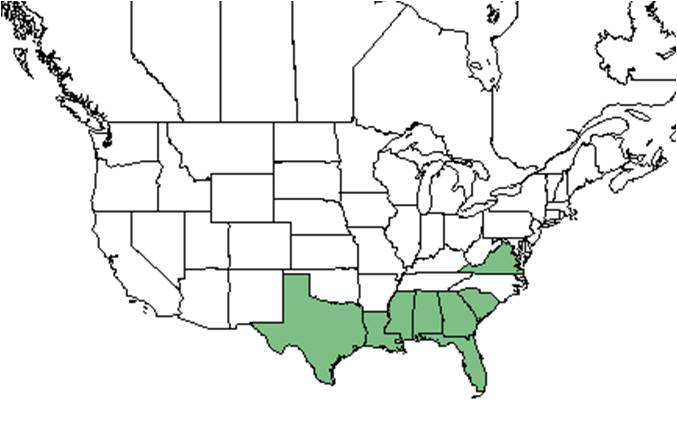Ruellia ciliosa
| Ruellia ciliosa | |
|---|---|

| |
| Photo taken by Gil Nelson | |
| Scientific classification | |
| Kingdom: | Plantae |
| Division: | Magnoliophyta – Flowering plants |
| Class: | Magnoliopsida – Dicotyledons |
| Order: | Scrophulariales |
| Family: | Acanthaceae |
| Genus: | Ruellia |
| Species: | R. ciliosa |
| Binomial name | |
| Ruellia ciliosa (Pursh) R.W. Long | |

| |
| Natural range of Ruellia ciliosa from USDA NRCS Plants Database. | |
Common names:Sandhills Wild Petunia, Ciliate Wild Petunia (Nelson 2006).
Contents
Taxonomic notes
Description
Distribution
It is found in sandhills of Florida, Georgia, South Carolina, and North Carolina (Nelson 2006).
Ecology
Habitat
In the Coastal Plain in Florida, it can be found in recently burned longleaf pine wiregrass woods, longleaf pine sandhills, burned longleaf pine ridges, open woodlands, turkey-oak-pinelands, scrub oak barrens, pine savannas, annually burned savannas and annually burned hardwoods (FSU Herbarium). It can also be found along roadsides, disturbed turkey oak-pinewoods, and pine-hardwood clearings. It grows in sandy loam and sandy soil (FSU Herbarium). Associated species include Sporobolus junceus, turkey oak and bluejack oaks (FSU Herbarium).
Phenology
It flowers March through September (FSU Herbarium).
It blooms from May through September and in response to fire (see below) (Nelson 2006).
Seed dispersal
Seed bank and germination
Fire ecology
It flowers within two months of burning in early summer (KMR). Ruellia ciliosa responds rapidly to fire and may be seen as one of the more common plants in longleaf pine native ground cover after a prescribed burn. Within a few weeks or so, Ruellia ciliosa, produces new leaves and flowers profusely but temporary (Nelson 2006,KMR). It was also observed to flower in areas raked and cleared of litter other vegetation in a longleaf pine-wiregrass site which otherwise had not burned for several years, suggesting that it germinates and flowers in response to to light (KMR).
Pollination
Use by animals
Diseases and parasites
Conservation and Management
Cultivation and restoration
Photo Gallery
References and notes
Robertson, Kevin M. 2014. Personal observation made at Pebble Hill Plantation, Grady County, Georgia.
Florida State University Robert K. Godfrey Herbarium database. URL: http://herbarium.bio.fsu.edu. Last accessed: July 2015. Collectors: Loran C. Anderson, A.B. Seymour, A.E. Radford, Sidney McDaniel, R. F. Thorne, R. A. Davidson, Robert Kral, Robert K. Godfrey, Gary R. Knight, Bill & Pam Anderson, Ann F. Johnson, Roy Komarek. States and Counties: Alabama: Baldwin. Florida: Bay, Gadsden, Jackson, Levy, Liberty, Monroe, Okaloosa, Santa Rosa, Wakulla, Washington. Georgia: Grady, Thomas. Mississippi: Jackson. South Carolina: Sumter. Compiled by Tall Timbers Research Station and Land Conservancy.
Nelson, Gil. Atlantic Coastal Plain Wildflowers: A Field Guide to the Wildflowers of the Coastal Regions of Virginia, North Carolina, South Carolina, Georgia, and Northeastern Florida. Guilford, CT: FalconGuide, 2006. 36. Print.